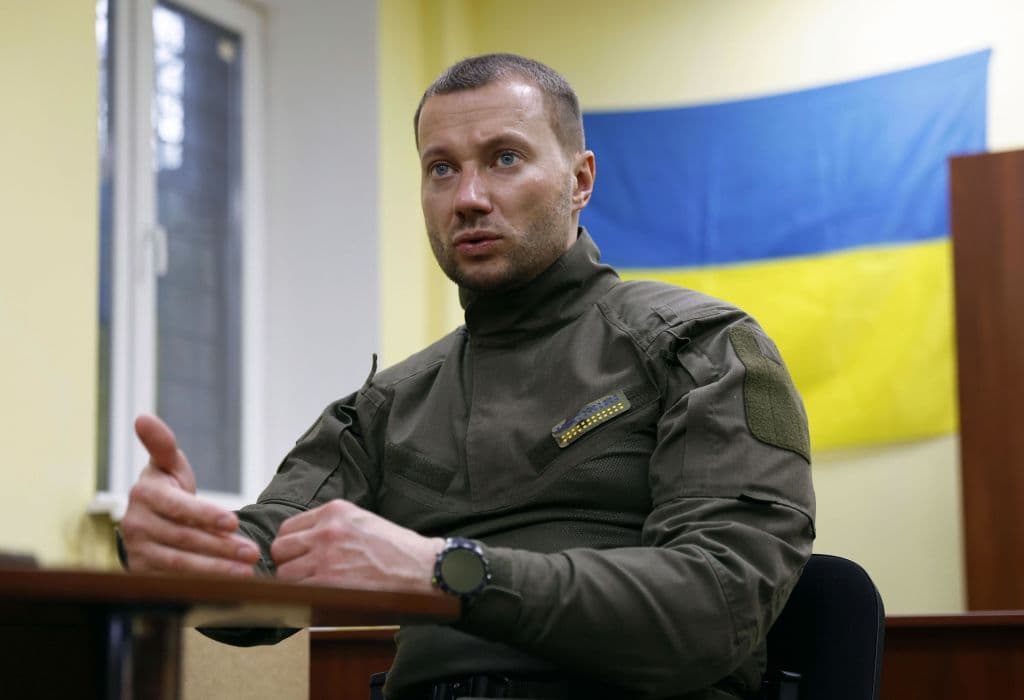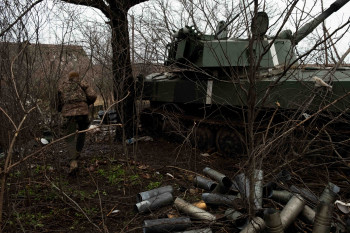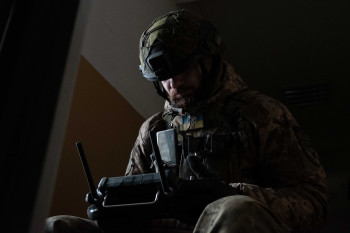Donetsk Oblast Governor denies Russia captured Soledar, claims Ukraine 'fighting for every centimeter'

Donetsk Oblast Governor Pavlo Kyrylenko on Jan. 11 denied that Russian forces captured Soledar, saying that the "fiercest battle" is still raging in and around the small salt-mining town.
Speaking to the Kyiv Independent from Ukraine's eastern stronghold of Kramatorsk, Kyrylenko said that Russia's attempt to encircle and capture Soledar has "not succeeded" and that Russians are suffering from "huge losses in manpower and equipment" as a result.
Kyrylenko claimed that the fight was unfolding in the western and northern parts of the town, including inside the salt mine.
"The Ukrainian military is fighting for every centimeter (of Donetsk Oblast), including Soledar," Kyrylenko said.
Russia also denied earlier claims that Soledar, 10 kilometers north of Bakhmut, was under Moscow's control.
"Airborne units blocked Soledar from the north and south," the Russian Defense Ministry said. "Fighting is ongoing."
The comments come after Russian militants in eastern Ukraine and Kremlin-run Wagner mercenary Wagner Group said late on Jan. 10 that Russia had captured the town of Soledar.
Yevgeny Prigozhin, founder of Wagner Group and close ally of Russian President Vladimir Putin, has released photos and videos of what he said were his mercenaries in the salt mines of Soledar.
Soledar is located 10 kilometers north of Bakhmut, a city Russia has attacked for over five months.
The U.K. Defense Ministry said on Jan. 10 that Russia and Wagner's mercenaries have "likely" occupied most of Soledar over the past four days.
Capturing Soledar would be Moscow's most significant achievement since July.
Occupying Soledar does not guarantee Russia's success in Bakhmut, a city that Kyrylenko predicted Russia aims to seize as part of a "propaganda operation" amid its stalled war efforts elsewhere.
Capturing Soledar and Bakhmut would help Russia press toward the key Ukrainian strongholds in Donetsk Oblast – Kramatorsk and Sloviansk – located 40 kilometers west.
Russia continues to use its siege tactics, Kyrylenko said during the interview, trying to capture the ruins after "practically destroying" settlements.
He said it is likely because Ukraine fortified eastern cities, such as Kostiantynivka, very well, and seizing them without inflicting destruction would be much harder.
More than 80% of Soledar and about 60% of Bakhmut is "completely destroyed," according to the governor.
The governor claimed that Russia had not inflicted "significant, huge losses" on the Ukrainian troops fiercely fighting in Soledar, which contradicts Prigozhin's description of the battle as "a meat grinder."
However, a soldier fighting in Soledar told CNN on Jan. 10 that "the situation is critical" and "no one counts the dead" because the death toll is so high.
Kyrylenko said he is forbidden to talk about Ukraine's casualties, but he added that the casualty ratio is one to five as a rule, with a larger loss inflicted on those launching an offensive.
The Kyiv Independent couldn't confirm the governor's assessment.
Amid the heavy fighting in the area, the governor said that water and gas supplies have been nonexistent in Soledar since May, and it became "impossible" to keep repairing constantly shelled electricity lines as of September.
No evacuation or humanitarian aid convoys have been allowed to enter Soledar since Jan. 6 for safety reasons, Kyrylenko said.
Some 550 civilians currently remain in Soledar without heating in subzero weather, according to Kyrylenko.
Regarding when Ukraine would view its withdrawal from Soledar as imminent, Kyrylenko said that it’s possible “only” when Russian artillery gets so intense that it becomes impossible for Ukrainian troops to hide from it and hold the defense.
Kyrylenko claimed this hasn’t happened yet, saying that “our fighters are (currently) giving the most valuable – their lives – for our freedom and independence.”











